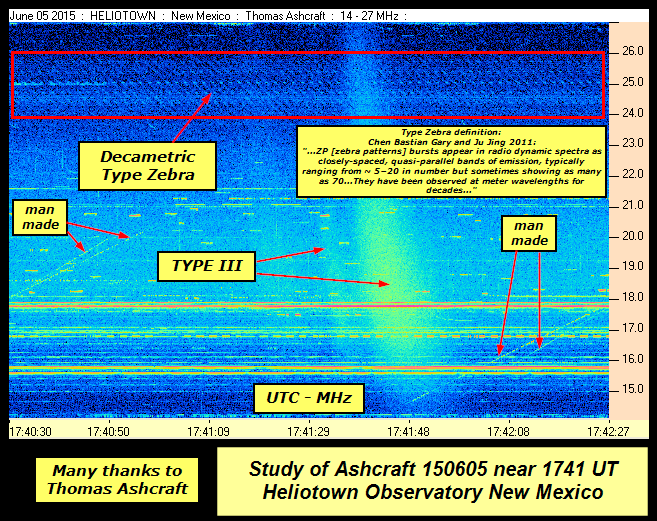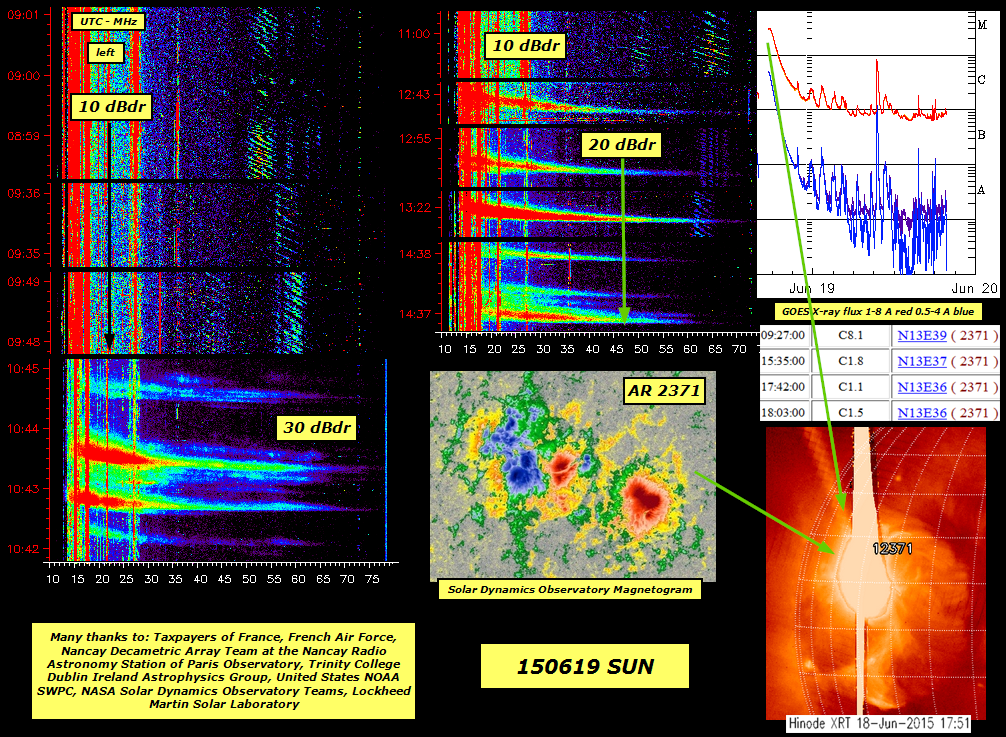I refer to Loi et al. 2015:
http://arxiv.org/abs/1504.06470http://adsabs.harvard.edu/cgi-bin/bib_query?arXiv:1504.06470http://adsabs.harvard.edu/cgi-bin/nph-ref_query?bibcode=2015arXiv150406470L&refs=REFERENCES&db_key=PRE 32 References
http://caastro.org/http://caastro.org/news/2015-tubeshttps://youtu.be/ymZEOihlIdU
http://herrero-radio-astronomy.blogspot.com/search/label/Murchison%20Wide%20Field%20ArrayAbstract: "Ionization of the Earth's atmosphere by sunlight forms a complex, multi-layered plasma environment within the Earth's magnetosphere, the innermost layers being the ionosphere and plasmasphere. The plasmasphere is believed to be embedded with cylindrical density structures (ducts) aligned along the Earth's magnetic field, but direct evidence for these remains scarce. Here we report the first direct wide-angle observation of an extensive array of field-aligned ducts bridging the upper ionosphere and inner plasmasphere, using a novel ground-based imaging technique. We establish their heights and motions by feature-tracking and parallax analysis. The structures are strikingly organized, appearing as regularly-spaced, alternating tubes of overdensities and underdensities strongly aligned with the Earth's magnetic field. These findings represent the first direct visual evidence for the existence of such structures."
CAASTRO Press release: real-time, 3D movies of plasma tubes
http://caastro.org/news/2015-tubes"...By creatively using a radio telescope to see in 3D, astronomers have detected the existence of tubular plasma structures in the inner layers of the magnetosphere surrounding the Earth. For over 60 years, scientists believed these structures existed but by imaging them for the first time, we’ve provided visual evidence that they are really there," said Cleo Loi of CAASTRO at the University of Sydney.
Ms Loi is the lead author on this research, undertaken as part of her award-winning undergraduate thesis and published in Geophysical Research Letters today. In collaboration with international colleagues, she identified the structures.
"The discovery of the structures is important because they cause unwanted signal distortions that could, as one example, affect our civilian and military satellite-based navigation systems. So we need to understand them," Ms Loi said.
"The region of space around the Earth occupied by its magnetic field, called the magnetosphere, is filled with plasma that is created by the atmosphere being ionised by sunlight. The innermost layer of the magnetosphere is the ionosphere, and above that is the plasmasphere. They are embedded with a variety of strangely shaped plasma structures including, as has now been revealed, the tubes. We measured their position to be about 600 kilometres above the ground, in the upper ionosphere, and they appear to be continuing upwards into the plasmasphere. This is around where the neutral atmosphere ends, and we are transitioning to the plasma of outer space," explained Ms Loi.
Using the Murchison Widefield Array (MWA), a radio telescope located in the Western Australian desert, Ms Loi found that she could map large patches of the sky and even exploit the MWA’s rapid snapshot capabilities to create a movie – effectively capturing the real-time motions of the plasma.
"We saw a striking pattern in the sky where stripes of high-density plasma neatly alternated with stripes of low-density plasma. This pattern drifted slowly and aligned beautifully with the Earth’s magnetic field lines, like aurorae," Ms Loi said.
"We realised we may be onto something big and things got even better when we invented a new way of using the MWA."
The MWA consists of 128 antenna ‘tiles’ spread over an area roughly three by three kilometres that work together as one instrument – but by separating the signals from tiles in the east from the ones in the west, the astronomers gave the MWA the power to see in 3D.
"This is like turning the telescope into a pair of eyes, and by that we were able to probe the 3D nature of these structures and watch them move around," said Ms Loi.
"We were able to measure the spacing between them, their height above the ground and their steep inclination. This has never been possible before and is a very exciting new technique."
This ability adds yet another accolade to the MWA’s name after it had already proven its worth as a powerful precursor instrument to the Square Kilometre Array (SKA), and now the MWA‘s 3D vision has the potential to provide many more in-depth analyses of the formation of plasma structures.
It is to Cleo’s great credit that she not only discovered this but also convinced the rest of the scientific community. As an undergraduate student with no prior background in this, that is an impressive achievement," said Ms Loi’s supervisor Dr Tara Murphy, also of CAASTRO at the University of Sydney.
When they first saw the data, many of her senior collaborators thought the results were literally ‘too good to be true’ and that the observation process had somehow corrupted the findings, but over the next few months, Cleo managed to convince them that they were both real and scientifically interesting."
Ms Loi has been awarded the 2015 Bok Prize of the Astronomical Society of Australia for her work...."
---
Authors
Shyeh Tjing Loi - Lead Author
Plama tubes visualization
Murchison Widefield Array antenna tiles























































